blog»Digital Marketing»E-Commerce Optimization: Shopify’s A/B Testing Strategies for Merchant Success
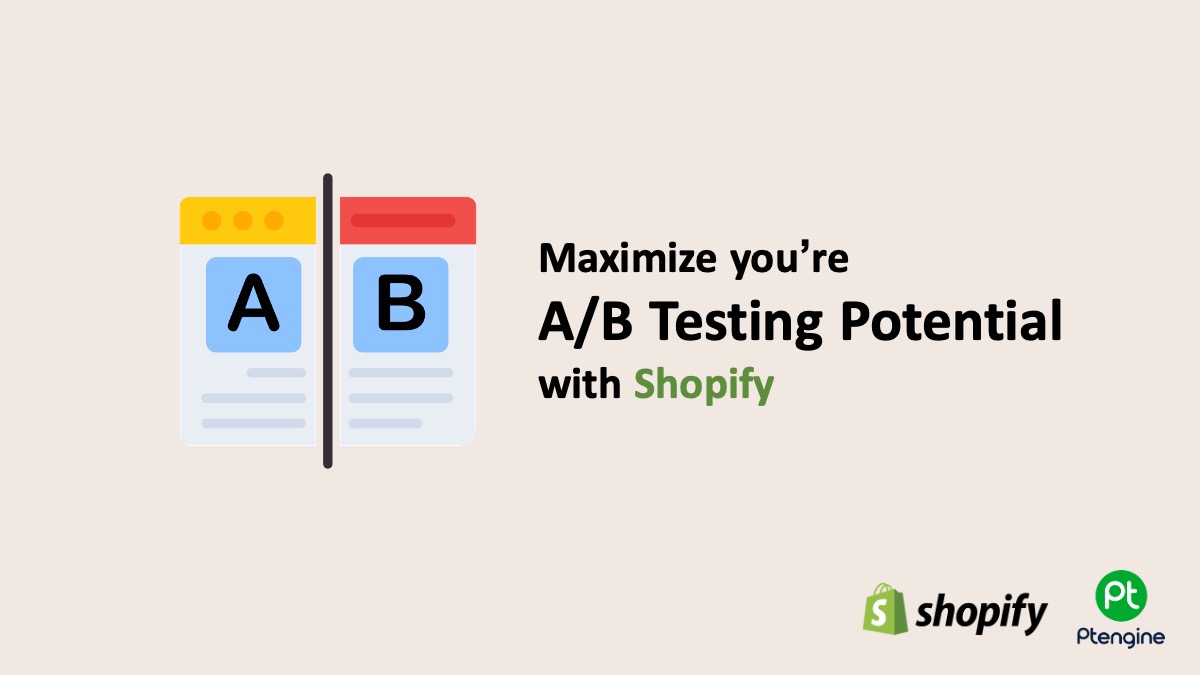
E-Commerce Optimization: Shopify’s A/B Testing Strategies for Merchant Success
2024/05/20
You can read this article in about 28 minutes
Introduction
A/B testing, sometimes known as split testing, is a method of comparing two versions of a webpage or app against each other to determine which one performs better. It’s a game-changer for businesses looking to make data-driven decisions and optimize their online stores for maximum conversion rates and customer satisfaction.
This post dives deep into the realm of A/B testing within the Shopify ecosystem. We’ll explore how Shopify’s built-in features and third-party integrations empower merchants to experiment and innovate without guesswork. By analyzing real-world case studies, we’ll see firsthand how merchants have transformed their businesses by tweaking product pages, refining navigation, and optimizing marketing campaigns through rigorous A/B testing.

Whether you’re a seasoned Shopify merchant or just starting, understanding the power of A/B testing can provide you with the insights needed to elevate your e-commerce game. This isn’t about making wild guesses; it’s about making informed decisions that lead to tangible results. So, buckle up as we journey through the strategies and success stories that illustrate just how impactful A/B testing can be for your Shopify store.
Chapter 1: Understanding A/B Testing
Before we dive into the exciting world of Shopify and its successful merchants, it’s essential to understand what A/B testing is and why it matters so much in the e-commerce landscape. At its core, A/B testing is a method of comparing two versions of a webpage or app against each other to determine which one performs better. This technique involves splitting your audience into two groups: Group A sees the original version (the control), while Group B sees a modified version (the variation).
Why is this important? In e-commerce, small changes can make a big difference. A minor tweak in your call-to-action button, a slight adjustment in product descriptions, or a change in the layout of your homepage can significantly impact your conversion rates, customer engagement, and overall sales. A/B testing takes the guesswork out of these changes. Instead of making assumptions about what might work better, you use real data to guide your decisions.
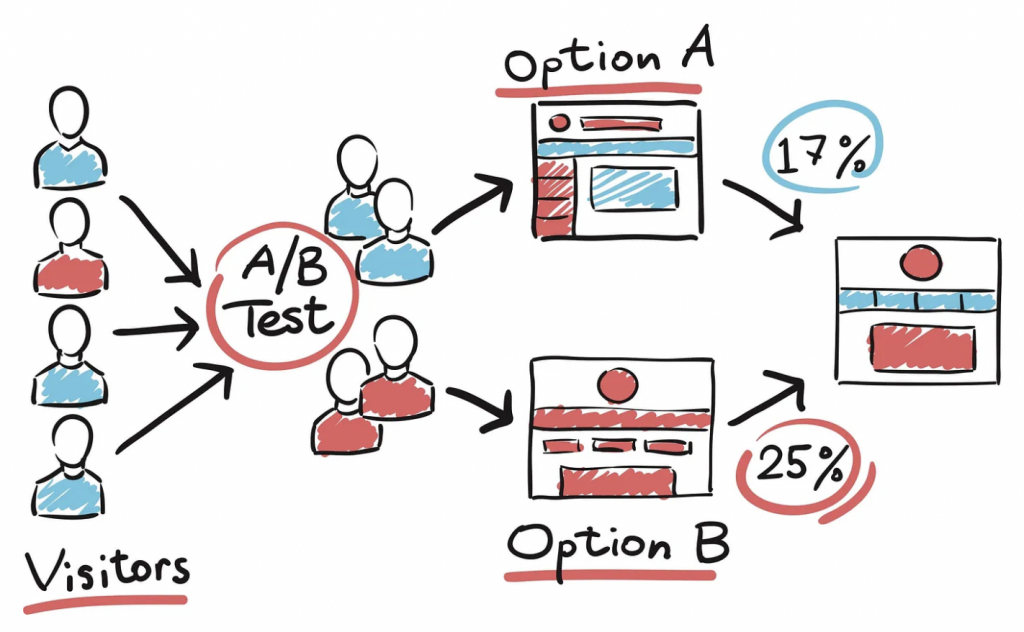
For instance, imagine you’re unsure whether a green or blue “Buy Now” button will encourage more customers to complete their purchases. By running an A/B test, you can present the green button to one group of visitors and the blue button to another. After collecting enough data, you can analyze which color led to more clicks and conversions, giving you a clear winner based on actual user behavior.
Shopify recognizes the power of A/B testing and provides merchants with the tools to implement these experiments seamlessly. Whether through Shopify’s built-in analytics or third-party apps like Google Optimize and Optimizely, merchants can set up and run A/B tests to continually refine their stores. This data-driven approach helps them create a more effective, user-friendly shopping experience, ultimately leading to greater success.
For more insights into effective A/B testing strategies, check out this article on unlocking e-commerce success with Ptengine.
In the following chapters, we’ll explore how Shopify merchants have harnessed the power of A/B testing to drive significant improvements in their businesses, sharing practical examples and insights to inspire your own e-commerce optimization efforts.
Chapter 2: Shopify’s Commitment to A/B Testing
Shopify has long been a leader in the e-commerce space, not just for providing an accessible platform for online stores but also for its dedication to empowering merchants with cutting-edge tools. One of the key aspects of this empowerment is Shopify’s robust support for A/B testing, which helps merchants make data-driven decisions that can significantly enhance their store’s performance.
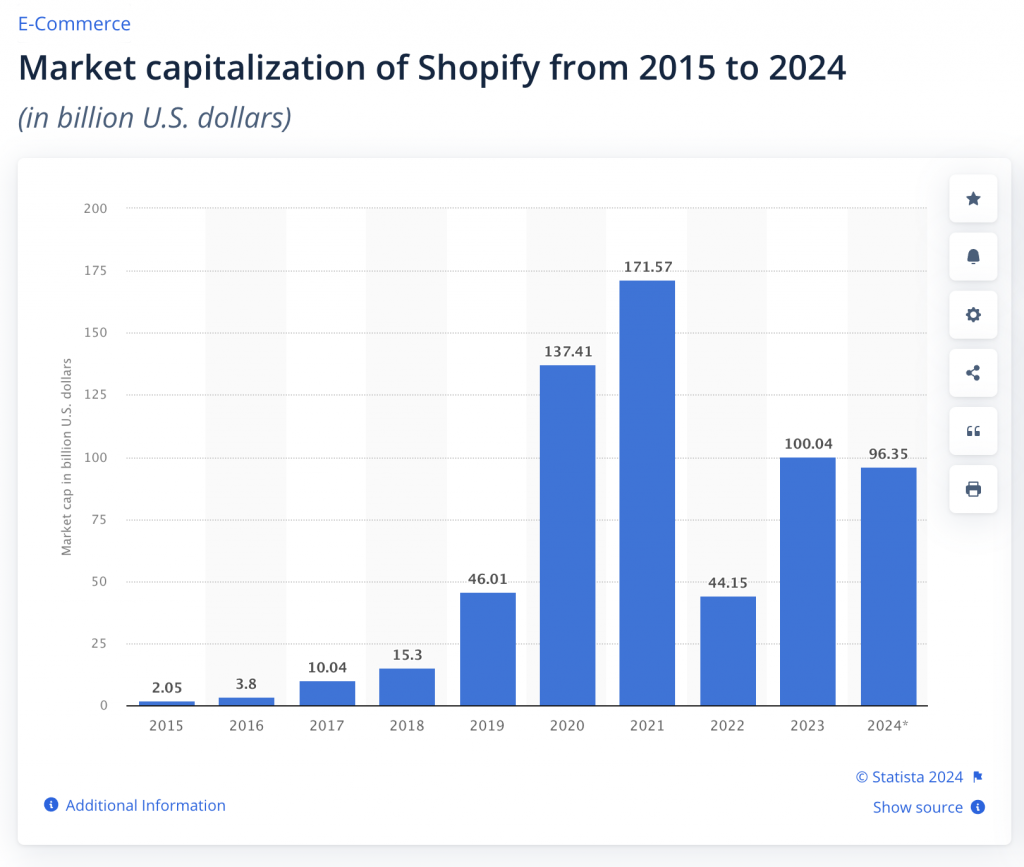
Shopify offers a range of built-in features and integrations that facilitate seamless A/B testing. These tools allow merchants to test various elements of their online store, from homepage layouts and product pages to checkout processes and marketing campaigns. By enabling merchants to experiment with different versions of their site, Shopify helps them discover what truly resonates with their customers.
In collaboration with Ptengine, Shopify has further enhanced its data-tracking and A/B testing capabilities. Ptengine’s comprehensive analytics suite provides merchants with deeper insights into user behavior, enabling more precise and impactful A/B testing. This partnership is detailed in the article Enhancing Shopify with Ptengine: A Guide to Superior Data Tracking, which outlines how merchants can leverage this powerful combination to gain a competitive edge.
For example, using Ptengine’s heatmaps and session recordings, Shopify merchants can identify exactly how users interact with their site. This data can inform A/B testing hypotheses, ensuring that tests are based on actual user behavior rather than assumptions. By integrating these insights with Shopify’s testing tools, merchants can create more targeted and effective experiments.
Moreover, Ptengine’s funnel analysis helps pinpoint where potential customers drop off in the buying process. By understanding these pain points, merchants can design A/B tests to address specific issues, such as streamlining the checkout process or enhancing product page layouts. These targeted tests can lead to significant improvements in conversion rates and customer satisfaction.
Shopify’s commitment to providing top-tier A/B testing tools, combined with Ptengine’s advanced analytics, offers merchants a powerful platform for continuous improvement. This synergy between Shopify and Ptengine exemplifies how data-driven strategies can drive e-commerce success, ultimately leading to a more refined and profitable online shopping experience.
In the next chapter, we’ll explore real-world case studies of Shopify merchants who have successfully implemented A/B testing to optimize their stores and boost their business outcomes.
Case Study 1 – Improving Conversion Rates with Optimized Product Pages: Gymshark
To illustrate the impact of A/B testing, let’s delve into a real-world example of Gymshark, a leading fitness apparel brand that significantly improved its conversion rates through optimized product pages on Shopify.
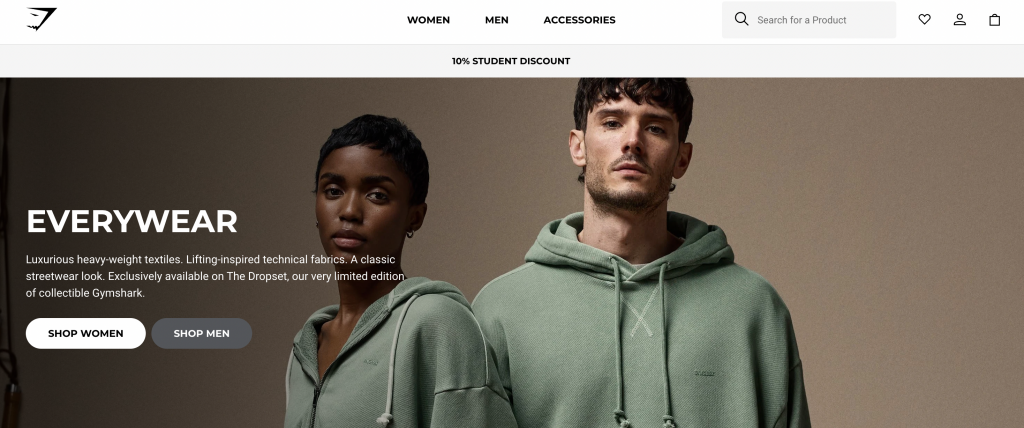
The Challenge: Gymshark noticed that while their product page views were high, the conversion rates were not meeting their expectations. They hypothesized that elements such as product images, descriptions, and call-to-action buttons might not be effectively driving customers to make purchases.
The Experiment: Gymshark decided to run an A/B test focusing on the product page. They created two versions of the page:
- Version A (Control): The existing layout with standard product images, a lengthy description, and a generic “Buy Now” button.
- Version B (Variation): An updated layout with high-quality images from multiple angles, a concise and engaging description, and a more prominent, contrasting “Add to Cart” button.
The Results: After running the test for two weeks and gathering sufficient data, Gymshark analyzed the results. The variation page (Version B) showed a 25% increase in conversion rates compared to the control. Customers responded positively to the enhanced visuals and clearer call-to-action, leading to more completed purchases.
The Takeaway: This case study highlights how A/B testing can uncover the specific elements that drive customer behavior. By systematically testing and optimizing product page components, Gymshark was able to make informed changes that directly impacted its bottom line. This example underscores the importance of continual experimentation and refinement to achieve e-commerce success.
In the next chapter, we’ll examine another case study where a Shopify merchant used A/B testing to enhance user experience through navigation and layout changes, driving even more impressive results.
Case Study 2 – Enhancing User Experience Through Navigation and Layout Changes: Allbirds
In this chapter, we explore how Allbirds, a popular sustainable footwear brand, used A/B testing to enhance user experience by optimizing their website’s navigation and layout.
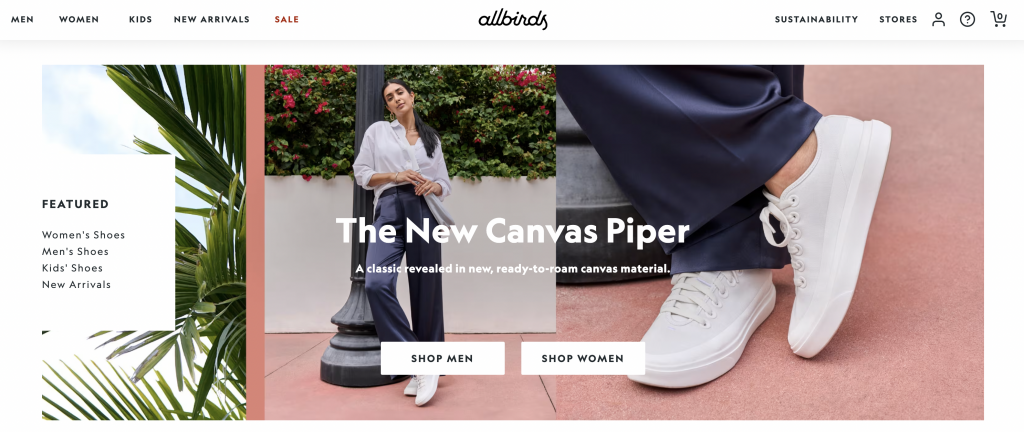
The Challenge: Allbirds wanted to improve user engagement and reduce bounce rates on their Shopify store. They noticed that while many visitors landed on their homepage, a significant number left without exploring further. The hypothesis was that the site’s navigation and layout might not be intuitive or engaging enough.
The Experiment: Allbirds decided to run an A/B test targeting the homepage and main navigation menu. They created two versions of the homepage:
- Version A (Control): The existing layout with a traditional top navigation bar and a cluttered homepage featuring multiple promotional banners.
- Version B (Variation): A cleaner, more streamlined layout with a simplified navigation menu, a prominent search bar, and a single, high-impact hero image highlighting their best-selling product.
The Results: After conducting the A/B test over a month, Allbirds gathered and analyzed the data. The variation (Version B) led to a 30% increase in user engagement, measured by pages per session and time spent on the site. Additionally, the bounce rate decreased by 20%, indicating that users were finding the site easier to navigate and more appealing.
The Takeaway: This case study demonstrates the value of A/B testing in enhancing user experience. By simplifying the navigation and decluttering the homepage, Allbirds made their site more user-friendly, which kept visitors engaged and encouraged them to explore more products. This approach not only improved user satisfaction but also increased the likelihood of conversions.
In the next chapter, we’ll look at how another Shopify merchant, MVMT Watches, used A/B testing to optimize their email marketing campaigns, resulting in significant improvements in open and click-through rates.
Case Study 3 – Boosting Email Marketing Effectiveness: MVMT Watches
In this chapter, we examine how MVMT Watches, a renowned brand known for its stylish and affordable watches, leveraged A/B testing to optimize their email marketing campaigns, leading to significant improvements in open and click-through rates.
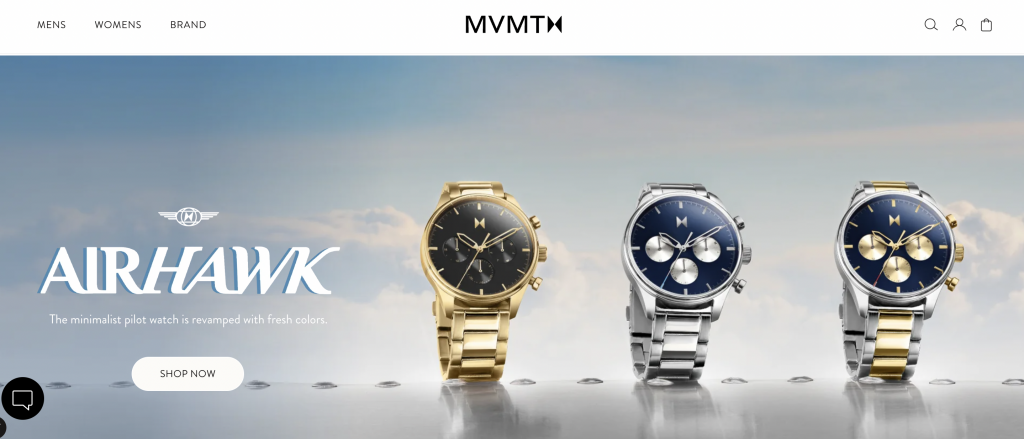
The Challenge: MVMT Watches aimed to enhance the effectiveness of their email marketing campaigns. They noticed that while their email subscriber list was growing, engagement metrics such as open rates and click-through rates were not performing as well as expected. The team hypothesized that subject lines, email content, and send times might be factors impacting these metrics.
The Experiment: MVMT Watches decided to run a series of A/B tests to optimize different elements of their email campaigns. They focused on three main areas:
- Subject Lines:
- Version A (Control): Standard subject lines with promotional language.
- Version B (Variation): Personalized subject lines with the recipient’s first name and a sense of urgency.
- Email Content:
- Version A (Control): Text-heavy emails with detailed product descriptions.
- Version B (Variation): Visual-centric emails with high-quality images and concise, compelling copy.
- Send Times:
- Version A (Control): Emails sent at a standard time (e.g., 9 AM).
- Version B (Variation): Emails sent at optimized times based on user behavior analytics (e.g., 7 PM).
The Results: After running the A/B tests for several email campaigns over two months, MVMT Watches analyzed the data. The personalized subject lines (Version B) resulted in a 20% increase in open rates. The visual-centric email content (Version B) led to a 25% higher click-through rate compared to the control. Additionally, sending emails at optimized times (Version B) improved overall engagement by 15%.
The Takeaway: This case study highlights the importance of A/B testing in refining email marketing strategies. MVMT Watches’ systematic approach to testing various elements of their email campaigns allowed them to identify what resonated most with their audience, leading to higher engagement and better conversion rates. These insights emphasize the need for continuous experimentation and adaptation to achieve marketing success.
Chapter 6: Best Practices for A/B Testing on Shopify
Having explored how top brands like Gymshark, Allbirds, and MVMT Watches have successfully implemented A/B testing, it’s time to discuss best practices for conducting your own A/B tests on Shopify. These tips will help you run effective experiments and make data-driven decisions to optimize your e-commerce store.
1. Start with Clear, Measurable Goals
- Define what you want to achieve with your A/B test. Whether it’s increasing conversion rates, reducing bounce rates, or boosting email engagement, having clear objectives will guide your testing process.
2. Test One Variable at a Time
- To understand what specific change impacts user behavior, isolate one variable per test. This could be the color of a call-to-action button, the layout of a product page, or the subject line of an email.
3. Ensure Adequate Sample Size and Duration
- For reliable results, your test needs enough data to be statistically significant. Run the test long enough to capture a representative sample of your audience, which varies based on your traffic volume.
4. Use Tools and Resources for Accurate Tracking
- Utilize Shopify’s built-in analytics and third-party tools like Google Optimize, Optimizely, and Ptengine. These tools provide robust data tracking and visualization capabilities. For more insights on optimizing conversion rates, check out this practical guide from Ptengine.
5. Develop a Hypothesis Before Testing
- Create a hypothesis based on your observations or data analysis. For example, “Changing the product page layout will increase conversion rates because it improves user experience.” This gives direction to your A/B tests.
6. Analyze and Act on Your Results
- After the test, analyze the data to determine which variation performed better. Use this information to make informed changes to your store. If the results are inconclusive, consider testing a different variable.
7. Iterate and Continuously Improve
- A/B testing is an ongoing process. Continuously run tests to keep improving your site. Even successful tests can be refined further to maximize results.
8. Document Your Tests
- Keep detailed records of your tests, including the hypothesis, variations, results, and conclusions. This documentation helps track your progress and can provide valuable insights for future tests.
By following these best practices, Shopify merchants can effectively utilize A/B testing to enhance their online stores. This systematic approach to experimentation leads to better user experiences, higher conversion rates, and ultimately, greater business success.
In conclusion, the power of A/B testing lies in its ability to provide actionable insights based on real user data. By embracing a culture of experimentation and continuous improvement, you can ensure that your Shopify store remains optimized and competitive in the ever-evolving e-commerce landscape.
Conclusion
A/B testing is a cornerstone of e-commerce success, enabling businesses to make data-driven decisions that optimize user experience and boost conversion rates. As we’ve seen through the experiences of brands like Gymshark, Allbirds, and MVMT Watches, systematic experimentation can lead to significant improvements in performance and customer satisfaction.
Shopify’s robust platform, enhanced by powerful tools like Ptengine, empowers merchants to conduct effective A/B tests. By starting with clear goals, testing one variable at a time, and using reliable tools, merchants can uncover valuable insights and implement impactful changes. Continuous testing and refinement are key to maintaining a competitive edge in the dynamic world of e-commerce.
Embracing A/B testing fosters a culture of continuous improvement. It transforms assumptions into actionable data, guiding businesses toward decisions that resonate with their audience. By following best practices and leveraging the right resources, Shopify merchants can unlock their full potential and drive sustained growth.
In the ever-evolving digital landscape, A/B testing stands as a crucial strategy for e-commerce optimization. Commit to this process, and you’ll not only enhance your store’s performance but also create a more engaging and satisfying experience for your customers.
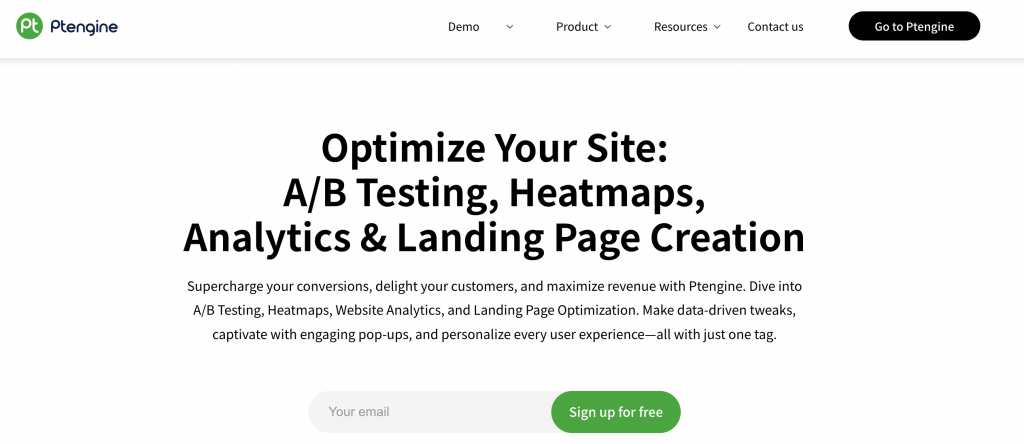
Ready to take your Shopify store to the next level? Sign up for Ptengine today and connect it with your Shopify account for the best digital marketing and A/B testing experience. Start leveraging powerful insights and tools to optimize your e-commerce strategy and achieve remarkable results.